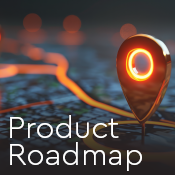Unified endpoint management (UEM) refers to a comprehensive approach to securing, managing, and controlling all endpoints within an organization from a single management interface. As organizations grow and workforces become more dispersed, the responsibilities of IT Teams seem to only expand. Keeping track of hundreds if not thousands of devices, ensuring they are configured correctly, and proactively updating applications and security patches can take a lot of time and effort, especially when toggling between multiple tools.
UEM also provides techs unparalleled visibility into device performance and application usage, which enables greater support for proactive issue resolution and enhanced security. For these reasons and others, UEM is an increasingly essential approach for device management.
Key takeaways
- Unified endpoint management is a comprehensive approach that streamlines and optimizes endpoint device management.
- UEM is essential for managing endpoint devices in an increasingly geographically dispersed organizational environment.
- Automation ensures consistent policy enforcement and updates.
- UEM provides greater visibility into endpoint device usage and performance, empowering teams to quickly address technical or security issues.
What is unified endpoint management?
Unified Endpoint Management enables IT teams to monitor and manage endpoint devices in an organization in real-time. These include desktops, laptops, physical and/or virtual servers, regardless of their geographic location.
UEM is powerful because it simplifies and streamlines endpoint configuration, monitoring, and security, greatly reducing the need to physically access devices or log into different systems. It can also proactively detect and resolve issues before they impact users, freeing up tech’s time to focus on more strategic initiatives.
UEM solutions can also help IT teams ensure devices across the network are functioning at peak performance so end users can avoid costly and potentially unexpected downtime.
How unified endpoint management works
Unified Endpoint Management involves several components working together to provide an all-in-one (unified) solution for managing endpoint devices in a single console. The main functions are:
- Endpoint monitoring. UEM solutions constantly observe endpoint activity to identify performance issues, detect vulnerabilities, and enforce policy compliance. This helps teams quickly update software or configure settings for optimal performance and security.
- Endpoint security. UEM proactively strengthens endpoint security by centralizing visibility and control, minimizing attack surfaces, and enabling rapid threat response through integrations with many endpoint/managed detection and response (EDR/MDR) solutions and other offerings, such as vulnerability management.
- Streamlining processes. Workflows and automation for maintenance and routine tasks like local account password rotations reduce the need for manual effort, freeing up resources to focus on more pressing tasks and planning. The centralized platform also allows them to apply policies, applications, and security settings to single users, groups, or all company endpoints from a single dashboard, ensuring devices are secure and compliant.
- Asset management. UEM solutions can automatically track hardware and software inventory and licenses. This helps ensure all devices are properly inventoried supporting a more efficient budgeting process for replacement and upgrade, of both hardware and software.
- Remote monitoring and management(RMM). As a core component of UEM, RMM enables more efficient IT service management due to the ability to configure devices, troubleshoot and diagnose issues, and proactively manage endpoints from afar. For organizations in growth mode, RMM provides scale, supporting an unlimited number of endpoints from a centralized pane of management.
- Patch management. UEM solutions can automatically apply security patches and other updates across different devices and operating systems, minimizing security risks due to outdated software, emerging threats, and common vulnerabilities and exposures (CVE).
- Protecting business data. Consolidating deployment and monitoring of business data protection across endpoints allows support at scale, combining multiple data streams into a single source of truth.
Why unified endpoint management is important for IT teams
As many organizations grow, they find themselves sacrificing function for scalability. IT teams may have hundreds, or even thousands of endpoint devices utilizing different operating systems, running a variety of business-critical applications across the globe. In these vast and complex networks, using multiple tools for endpoint management can become a burden that actually reduces the functionality of the solutions, ultimately leading to significant gaps in an organization’s operational maturity.
Consolidating multiple tools into a Unified Endpoint Management solution can help organizations uphold their functionality while scaling effectively. In addition to streamlining endpoint management, the proactive monitoring and alert capabilities UEM provides, offers greater service and security to your end users, presenting less risk to your business.
Some of the most important functions of unified endpoint management approach include:
- Onboarding and configuring devices. This ensures new devices meet organizational policies for compliance from the start. Settings can be configured remotely in case of a policy change regarding access or security, which also allows for improved oversight of inventory and lifecycle management.
- Deploying and updating applications. UEM enables the installation and configuration of applications across all devices, ensuring they are consistently updated for maximum efficiency and security. In addition, UEM can remove unwanted applications from shadow IT, or that are no longer needed within an organization.
- Monitoring performance and usage. Techs can use the single interface to produce insights into user behavior, helping allocate resources more efficiently while also identifying possible technical or security issues.
Best practices for UEM implementation
When implementing a unified endpoint management approach, the following best practices can help your IT team get the most out of them.
Key guidelines include:
- Conduct risk assessments and inventory audits. Assessments help identify an organization’s compliance requirements, potential vulnerabilities, and risk tolerance. IT can then use these findings to design UEM policies that mirror organizational priorities for operations and security. In addition, audits ensure an accurate record of all endpoints for inventory and lifecycle management purposes.
- Automate device enrollment and policy enforcement. UEM platforms can automatically configure devices with organizational settings for applications, access controls, and security during enrollment. Techs can also set and enforce policies automatically across all devices to ensure ongoing compliance, reducing the likelihood of unprotected devices or users.
- Proactively manage security patches and threat monitoring. Teams can promptly address vulnerabilities across devices with RMM tools regularly. They can also arrange for updates to be installed during non-business hours or other downtime to minimize disruption to operations. Threat monitoring tools can quickly identify suspicious behavior or usage in real time, enabling IT to step in to prevent issues from escalating. Options like ConnectWise NOC Services allow for external support here by having an outside team test security OS patches for IT partners.
- Consistently audit and update policies for use. IT environments and business requirements can change. UEM solutions can quickly and easily implement policy changes, ensuring that they continuously align with operational needs.
These abilities can help your team keep up with changes in technology, security risks, and business needs to maintain the effectiveness and safety of endpoint devices.
Finding effective unified endpoint management solutions
When evaluating unified endpoint management solutions, it’s essential to ensure features and functionalities align with client needs and can adjust to a fast-moving IT environment. Some things to look for in an effective solution include:
- Centralized management. Platforms should have a single console for managing all devices, monitoring for issues, and streamlining support tasks.
- Automation capabilities. Solutions with pre-defined commands can simplify complex endpoint management tasks like pushing application updates across diverse device types, reducing the need for manual intervention.
- Proactive monitoring and remote support. Platforms should enable real-time monitoring of performance and usage, enabling techs to step in at the first sign of an IT issue.
Choosing the right solution for unified endpoint management is key to delivering optimal performance in an increasingly dispersed business environment. ConnectWise RMM is our powerful remote monitoring and management solution, designed to help you manage all your clients’ endpoints with a single view. Our award-winning RMM can be seamlessly integrated with our ConnectWise solution suite and numerous third-party integrations to provide additional visibility, security, and ease of use. Not to mention, adopting an RMM can yield serious ROI for your business.
Watch a demo today to see how ConnectWise RMM can help bring your endpoint management to the next level.













